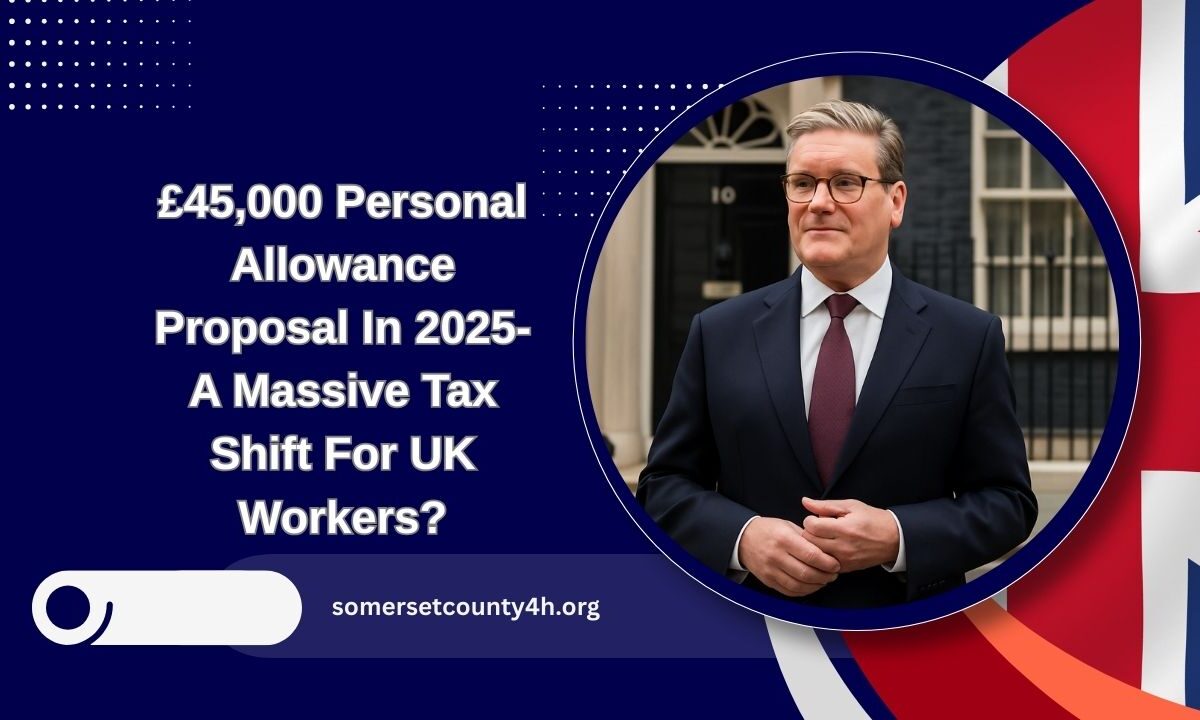The UK’s Personal Allowance—the income threshold before income tax applies—is under serious consideration for an unprecedented change.
With inflation, energy bills, and housing costs rising, the proposed increase of the Personal Allowance from £12,570 to £45,000 in 2025 could transform the financial future of working Britons.
Let’s explore the proposal, its potential impact, and who stands to benefit the most from this game-changing tax reform.
What Is the Personal Allowance and How Does It Work?
The Personal Allowance is the portion of your income that is tax-free. In 2025, it remains fixed at £12,570. Above that, different tax bands apply based on your income level.
Current UK Income Tax Bands (2025):
| Annual Income Range | Tax Rate |
|---|---|
| £0 – £12,570 | 0% (Personal Allowance) |
| £12,571 – £50,270 | 20% (Basic Rate) |
| £50,271 – £125,140 | 40% (Higher Rate) |
| Over £125,140 | 45% (Additional Rate) |
What Would Change with a £45,000 Personal Allowance?
Raising the Personal Allowance to £45,000 would triple the current tax-free threshold. That means every taxpayer would keep significantly more of their earnings before paying any income tax.
Key Impacts:
- Workers earning under £45,000 would pay zero income tax
- Basic rate taxpayers would save up to £6,486 per year
- Higher earners would still benefit from £32,430 in additional tax-free income
Who Would Benefit the Most?
This reform would dramatically affect a large portion of the UK population. Those on low to mid-level incomes would see the greatest benefit.
Likely Beneficiaries:
- Full-time workers earning between £20,000 and £45,000
- Dual-income households
- Self-employed individuals and small business owners
- Pensioners with moderate retirement income
- Families juggling employment and childcare
Why Is This Being Proposed Now?
Supporters argue the current Personal Allowance has not kept pace with inflation, leaving many middle-income earners overtaxed.
Arguments in Favour of the Increase:
- Rising cost of living demands a higher tax-free threshold
- Boost in consumer spending from increased take-home pay
- Encourages economic activity and financial independence
Will This Lead to Revenue Loss?
Raising the tax-free limit means immediate revenue loss, but economists argue the long-term benefits could outweigh the shortfall.
Potential Offsets:
- More spending leads to higher VAT and business tax collections
- Less reliance on welfare and tax credits
- Simpler tax administration reduces operational costs
Challenges in Implementation
Despite growing popularity, the proposed change faces serious hurdles:
- Political opposition from fiscal conservatives
- Risk to funding public services
- Concerns that it disproportionately benefits middle-income earners
Still, with the general election looming and public pressure mounting, it’s a proposal that could soon become reality.
Raising the Personal Allowance to £45,000 could redefine tax fairness in the UK. It would provide meaningful relief to millions of workers, increase disposable income, and stimulate economic growth.
While the proposal still needs political backing and fiscal analysis, it represents a significant step toward addressing the economic pressures facing modern working families.
FAQs
When could the £45,000 Personal Allowance come into effect?
If approved, it could be introduced in the 2025/2026 tax year, likely following the UK general election or autumn budget announcement.
Would pensioners benefit from the raised Personal Allowance?
Yes. Pensioners with annual income under £45,000 would not pay income tax, increasing their net income substantially.
Would higher earners still benefit from this change?
Yes. Even those earning over £125,000 would still receive £45,000 tax-free, reducing their effective tax rate slightly.

